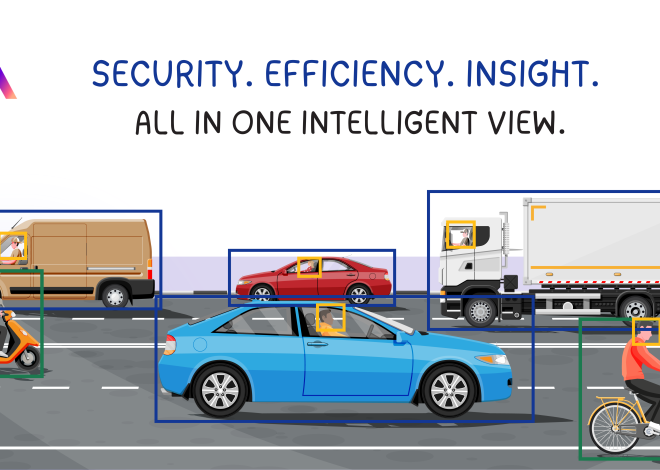Predictive Analytics for Customer Experience: The Future of Intelligent Customer Service
In today’s competitive business landscape, customer experience (CX) is no longer a luxury; it’s the lifeblood of success.
Studies show that businesses that prioritize exceptional customer experiences enjoy increased customer loyalty, higher customer lifetime value (CLTV), and a significant boost in positive word-of-mouth marketing.
However delivering consistently positive CX can be a challenge, especially as customer expectations continue to rise. This is where Predictive Analytics, powered by Artificial Intelligence (AI), emerges as a game-changer.

What is AI and AI in Customer Relationship Management (CRM)?
Artificial Intelligence (AI) refers to the field of computer science that allows machines to mimic human cognitive functions, such as learning and problem-solving.
In the realm of customer relationship management (CRM), AI plays a crucial role in automating tasks, analyzing customer data, and gaining deeper customer insights. This translates into more efficient and personalized customer service interactions.
AI Techniques that Lead to Better Customer Experience
AI employs various techniques to optimize customer experience
Machine Learning:
Algorithms learn from data to make predictions and decisions without explicit programming.
Natural Language Processing (NLP):
AI understands and interprets human language, enabling chatbots and virtual assistants to communicate with customers.
Predictive Analytics:
AI analyzes historical data to forecast future trends and behaviors, enabling proactive customer service and personalized recommendations.
Sentiment Analysis:
AI gauges customer sentiment from text data, allowing businesses to respond promptly to feedback and concerns.
Personalization:
AI tailors marketing messages, product recommendations, and interactions based on individual preferences and behaviors.
Power of Predictive Analytics in Customer Experience
Predictive analytics is a branch of AI that uses historical data, statistical modeling, and machine learning algorithms to forecast future events or customer behavior.
In the context of customer service, predictive analytics allows businesses to anticipate customer needs and proactively address potential issues before they arise.
This approach fosters stronger customer relationships and minimizes customer churn.
Ways Predictive Analytics Enhances Customer Experience
a. Anticipating Customer Needs:
Predictive analytics identifies patterns in customer behavior, enabling businesses to anticipate needs and preferences before they arise.
b. Personalized Recommendations:
By analyzing past interactions and purchase history, predictive analytics generates personalized recommendations, enhancing cross-selling and upselling opportunities.
c. Proactive Issue Resolution:
Predictive analytics flags potential issues before they escalate, allowing businesses to address concerns proactively and minimize customer dissatisfaction.
d. Dynamic Pricing Strategies:
Leveraging predictive analytics, businesses can optimize pricing strategies based on demand forecasts and market trends, ensuring competitive pricing while maximizing revenue.
e. Churn Prediction and Retention:
Predictive analytics identifies customers at risk of churn, enabling targeted retention efforts such as loyalty programs or personalized incentives.
f. Enhanced Resource Allocation:
By forecasting demand and service requirements, predictive analytics facilitates optimized resource allocation, ensuring efficient operations and timely support delivery.
Real-World Examples: Predictive Analytics Across Industries
Retail
Amazon’s recommendation engine, powered by predictive analytics, analyzes past purchases and browsing behavior to suggest relevant products to customers.
This personalized approach has contributed significantly to their customer loyalty and enhancing the shopping experience and driving sales.
Healthcare
IBM Watson Health employs predictive analytics to identify patients at risk of readmission, enabling proactive interventions and improving patient outcomes.
Finance
Bank of America leverages predictive analytics to identify customers at risk of fraudulent activity.
By analyzing spending patterns and identifying unusual transactions, banks can proactively prevent fraud and protect their customers’ financial well-being.
Telecom
Telecom companies like Verizon employ predictive analytics to anticipate network issues and optimize network performance.
This ensures a seamless and uninterrupted service experience for customers.
Travel & Hospitality
Hilton Hotels utilizes predictive analytics to personalize guest experiences.
By analyzing past preferences (room type, amenities used), Hilton can anticipate guest needs and customize their stay, leading to a more comfortable and enjoyable experience
These are just a few examples, and the potential applications of predictive analytics in CX are constantly evolving.
Conclusion
Predictive analytics empowers businesses to move beyond reactive customer service and create a customer-centric journey that fosters loyalty and drives business growth.
By harnessing the power of data and AI, businesses can transform their customer interactions, turning them into personalized, frictionless experiences that keep customers coming back for more.
FAQs
What distinguishes predictive analytics from other analytics techniques?
Predictive analytics focuses on forecasting future outcomes based on historical data, enabling businesses to anticipate trends and make proactive decisions.
How can businesses integrate predictive analytics into their existing systems?
Businesses can leverage AI-driven platforms and tools equipped with predictive analytics capabilities or collaborate with data scientists to develop custom solutions tailored to their specific needs.
Is predictive analytics suitable for businesses of all sizes?
Yes, predictive analytics can benefit businesses of all sizes by providing actionable insights and enabling data-driven decision-making, regardless of their scale or industry.
What are some common challenges associated with implementing predictive analytics?
Challenges may include data quality issues, privacy concerns, and the need for specialized expertise.
However, overcoming these challenges can yield substantial benefits in terms of improved customer experience and business performance.
How can I measure the success of my predictive analytics implementation?
Track key customer experience metrics like customer satisfaction scores, churn rate, and resolution times.
By comparing these metrics before and after implementing predictive analytics, you can gauge the impact on your customer experience efforts.
Ready to see how predictive analytics can transform your CX?
Schedule a free demo today and discover how our AI-powered CRM solution can help you personalize interactions, predict churn, and proactively address customer concerns.



